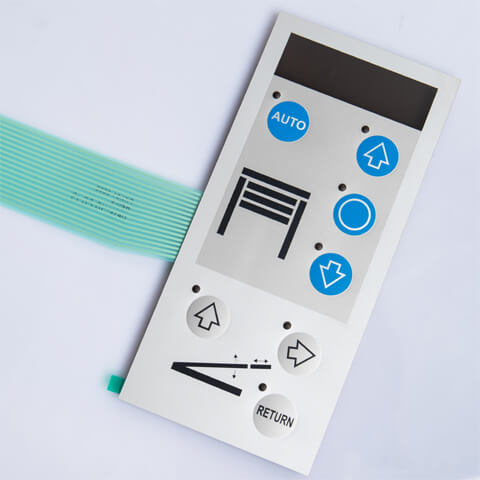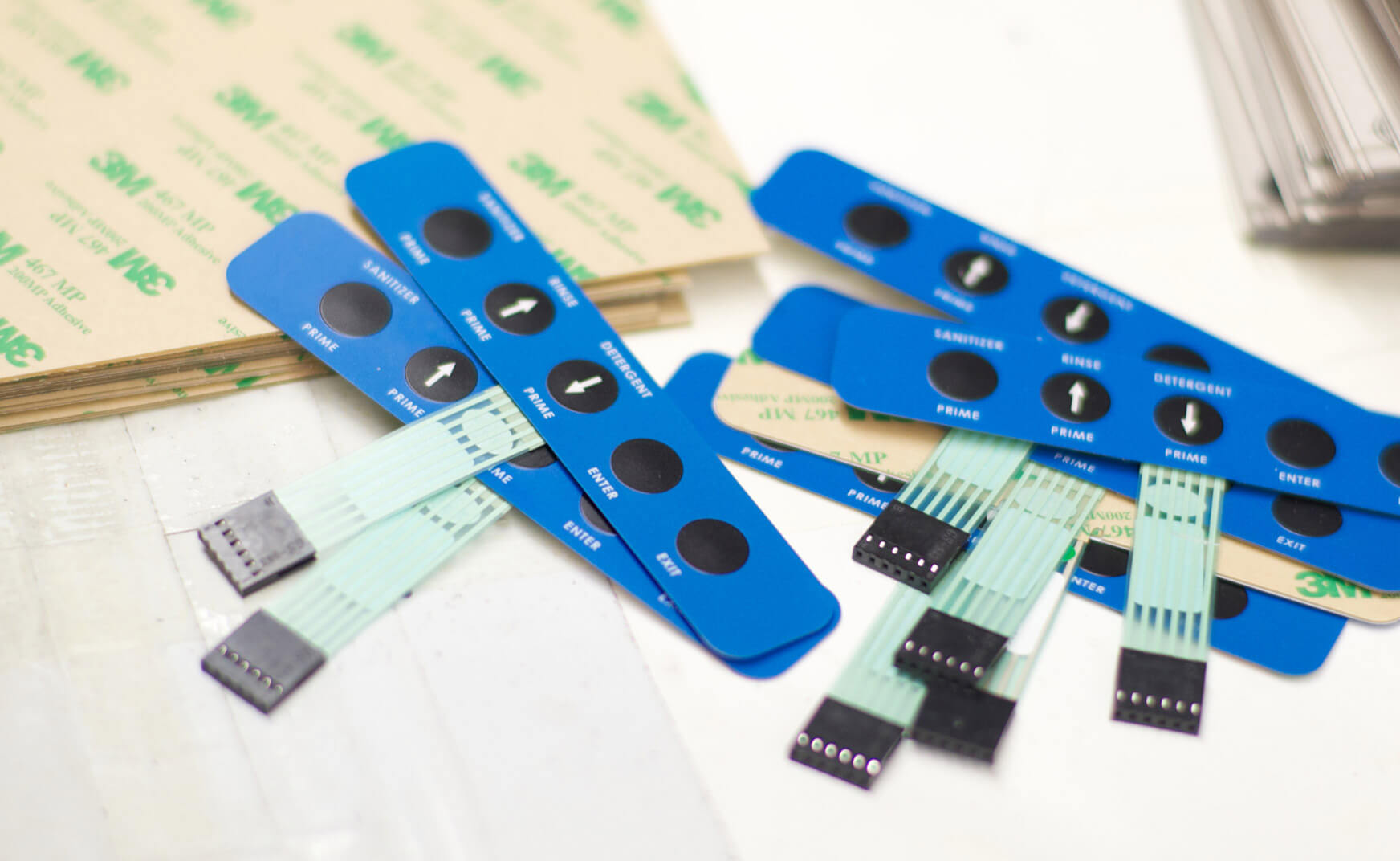Vital Functions to Search For When Choosing a Membrane Switch
Vital Functions to Search For When Choosing a Membrane Switch
Blog Article
Understanding the Performance of Membrane Layer Changes for Interface Gadget
The functionality of membrane layer switches represents a substantial innovation in user interface style, integrating efficiency with aesthetic versatility. As industries progressively focus on customer experience, comprehending the nuances of membrane layer button innovation comes to be vital.
What Are Membrane Buttons?
Membrane layer buttons are cutting-edge user interface devices that promote individual interaction with digital devices. These functional elements include several layers, including a graphic overlay, spacer, and a published circuit layer. The style enables a smooth combination right into different digital devices, boosting both the aesthetic and useful elements of individual interfaces.
Membrane switches are generally utilized in a vast variety of applications, from family home appliances to industrial machinery and medical devices. Their building and construction typically includes a slim profile, making them a perfect choice for portable styles. The responsive feedback provided by these switches can be crafted to satisfy specific customer choices, making certain reliable communication in between the user and the device.
Longevity is an additional substantial advantage of membrane layer buttons, as they are resistant to dust, dampness, and chemicals, which enhances their lifespan sought after atmospheres. In addition, these switches can be personalized in terms of form, dimension, and graphic layout, enabling branding and user-specific functions. In general, membrane layer switches stand for a practical service for boosting user experience in digital tools, incorporating functionality with aesthetic charm in a reliable fashion.
Exactly How Membrane Switches Over Work
Operating on a straightforward concept, membrane switches utilize a layered construction to sign up user input effectively. Each button contains multiple layers, consisting of a published circuit layer, a spacer layer, and a top graphic layer, which are designed to collaborate flawlessly. When an individual presses the top layer, it presses the spacer layer, bringing the conductive aspects of the circuit layer right into contact with each various other.
This call creates a shut circuit, signifying the device to carry out a details feature. The design permits numerous configurations, consisting of tactile feedback, which can boost the individual experience by offering a physical experience upon activation. The materials utilized in membrane buttons commonly include versatile substrates, such as polyester or polycarbonate, which make certain longevity and durability versus damage.

Key Advantages of Membrane Switches

One more considerable advantage is their compactness. Membrane layer switches are slim and light-weight, which allows producers to save room in their devices without giving up performance. This attribute is particularly useful in applications where weight and quantity are essential factors to consider.
In addition, membrane layer switches are immune to dirt, dampness, and chemicals, enhancing their toughness. This resilience expands their lifespan and decreases the requirement for regular substitutes, resulting in expense savings gradually.
In addition, the tactile comments provided by membrane layer buttons can be read what he said optimized to improve user interaction. They can include features such as raised buttons or distinct clicks, enhancing use and individual experience.
Applications Across Industries
Interface tools using membrane layer switches are common in a vast array of industries, showcasing their adaptability and functionality. Membrane Switch. In the medical industry, membrane layer buttons are important to gadgets such as diagnostic devices and patient tracking systems, where their toughness and convenience of cleaning are vital for preserving health requirements. In the automotive market, these switches are utilized in control panel controls and infomercial systems, supplying a streamlined and modern interface for individuals.
Moreover, the customer electronics industry gain from membrane switches in home appliances and handheld devices, where portable design and straightforward interfaces boost user experience. Industrial applications likewise utilize membrane switches over for control board in equipment and automation systems, emphasizing their robustness and resistance to extreme settings.
In the aerospace and defense industries, membrane layer switches are utilized in cockpit controls and equipment, where dependability and performance under severe conditions are paramount. Furthermore, the video gaming sector significantly incorporates membrane layer switches in controllers and gallery machines, adding to an appealing user experience. On the whole, the convenience of membrane layer switches allows their prevalent usage across countless fields, highlighting their relevance in modern-day customer interface design.
Future Patterns in Membrane Layer Change Modern Technology

Furthermore, using innovative materials, such as polycarbonate and polyester movies, is anticipated to climb, providing boosted sturdiness and resistance to environmental stress factors. These materials contribute to the overall long life of membrane switches, making them suitable for harsher industrial applications.
In addition, the consolidation of wise innovation, consisting of IoT connection, will certainly allow membrane buttons to communicate with other gadgets and systems, promoting an extra interactive individual experience. This trend aligns with the growing demand for clever gadgets throughout numerous sectors, from health care to customer electronic devices.
Finally, customization choices are prepared for to increase, enabling makers to create bespoke options customized to certain user needs and preferences. These advancements will certainly position membrane layer buttons as crucial components in the evolution of user interface technology.
Conclusion
To conclude, membrane changes represent an essential advancement in user interface technology, supplying a dependable and flexible option for diverse electronic applications. Their split building promotes small style, while features such as responsive feedback boost customer interaction. The sturdiness against environmental factors further solidifies their energy throughout multiple industries. As innovations in product science and touch noticing innovations proceed, the functionality and applicability of membrane layer buttons are anticipated to expand, strengthening their relevance in modern-day digital gadgets.
Report this page